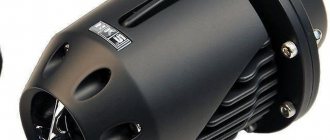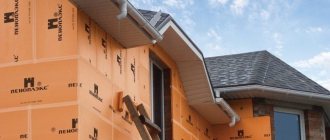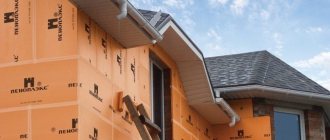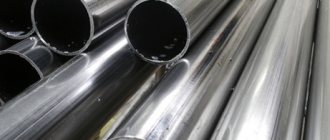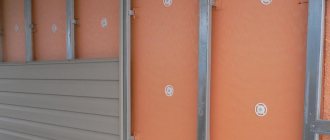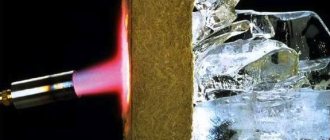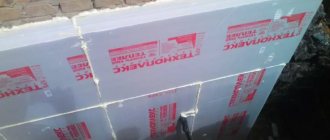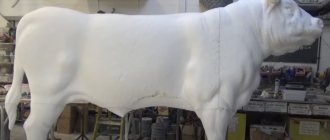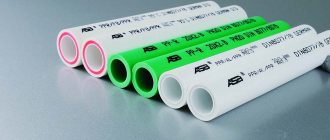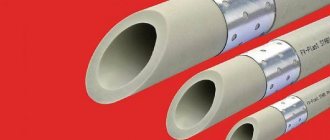Plastic pipes have long been an excellent alternative to metal products. This popularity is explained by the strength and durability of polymer materials. In addition, polypropylene pipes have a composite structure, which allows the material to withstand high temperatures and pressure (without deformation), not be subject to corrosion, and not react to aggressive components.
In addition, the installation of such pipelines is much simpler: the plastic is easily processed and heat welded. In this article we will look at the key parameters that will be useful to both the home handyman and the professional plumber.
Scope of application of pipes made of polymer material
Considering that polypropylene pipes are able to function in almost any conditions, the products have a wide range of applications. In particular:
- Hot and cold water supply in multi-storey and private buildings.
- Sewerage.
- Installation of a “warm floor” system in the house.
- Disposal of groundwater and wastewater.
- Creation of drainage, irrigation and reclamation systems.
- Ventilation.
- Pneumatic systems.
- Pipelines for transporting chemically active substances.
It should be noted that depending on the application, different types of pipes are used. Subject to operating conditions, these products can last about 50 years without loss of functionality.
Physico-mechanical characteristics
- Melting point: +149C (GOST 21553).
- Density: 0.9 g/cu.m. cm (GOST 15139).
- Yield strength (tension): from 24 to 25 N/kV. mm (GOST 11262).
- Tensile strength: from 34 to 35 N/kV. mm (GOST 11262).
- Elongation at yield point: 50%.
- Expansion coefficient: 0.15 mm/mmS (GOST 15173).
- Thermal conductivity (at +20C): 0.24 W/mS (DIN 52612).
- Specific heat capacity (+20C): 2 kJ/kgC (GOST 23630).
Advantages and disadvantages of plastic pipes
Polypropylene has a number of undeniable advantages over metal pipelines. The strengths of the material include the following:
- Long service life . Manufacturers claim that pipes used in cold water supply can last at least 100 years .
- Low weight . Polypropylene is a lightweight material. If we compare products of similar length and diameter made of plastic and metal, the former will be about 9 times .
- Easy installation . A person who does not have special skills and knowledge can handle the installation of such a water supply system.
- Increased level of sound insulation . Pipes in residential buildings do not allow noise to pass through.
- Corrosion resistance . The inner surface of the pipe is processed using a special technology, which eliminates the appearance of solid formations that reduce the throughput of the pipeline.
In addition, one can note high resistance to low temperatures and dynamic loads. Such pipes do not require special maintenance and are sold in an affordable price segment.
The material also has some disadvantages. In particular:
- There remains a high probability of linear expansion, which requires the installation of special compensators .
- Accelerated aging of the material under the influence of direct sunlight .
- Low thermal stability , which implies the mandatory use of insulation.
In addition, wall mounting pipelines are not allowed to sag, so the number of fastening elements increases significantly.
Properties of polypropylene
A white and solid substance produced by the polymerization of propylene, it is one of the most common types of modern plastics.
Polypropylene has a number of useful consumer qualities that affect its wide range of applications. The material successfully combines low density with the ability to withstand heavy loads.
An important property of polypropylene is its resistance to large temperature changes, from – 10 to + 170 degrees.
Plastic has dielectric properties and can be easily processed through various processing methods such as sawing, welding, bending and drilling.
The material can withstand exposure to aggressive chemical environments, acidic liquids and harmful fumes. At the same time, polypropylene itself is an absolutely non-toxic and environmentally friendly type of plastic.
Its use as domestic structures is harmless to people and nature.
Symbols - markings
By marking polypropylene pipes you can learn about the raw materials used for production and the technical features of the material. The symbols given above indicate the ability of pipes to withstand a certain pressure inside the pipeline.
Now let's look at the markings, which indicate some properties of the material. In the construction market, you can find pipes of the following categories:
- PPB are products with high resistance to mechanical damage and water hammer, used in underfloor heating and cold water supply systems.
- PPH are large diameter pipes, which are usually used when installing ventilation systems.
- PPR is a universal product, equally effective in hot and cold water supply.
Regardless of the marking, polypropylene pipes are made of plastic. However, manufacturers usually add active additives to the raw materials that increase the elasticity and heat resistance of the material.
How to properly secure a pipeline
Good heating or plumbing installation is not only about the quality of the connection, but also about the implementation of knowledge on how to install assembled polypropylene pipes.
Proper fastening of plastic wiring to the walls will prevent it from sagging and deformation when heated with hot water.
When making repairs, sometimes you have to forcefully pull the pipe out of the clips, so the dowels must firmly fix this small element against the wall
For fixing pipes, the following are used: clips (single, stacked, with a clamp) and clamps (on a hairpin, paired, wall).
New models are constantly appearing on the market, so it is better to select clamps and clips directly in the store. Clips basically ensure free movement of pipes along the axis, and clamps firmly fix them in one position.
A particularly dangerous consequence of improper installation is neglecting the thermal expansion of pipes.
The length of simple PP pipes can change by 10-15mm/1m when heated. When they are rigidly fixed, deformation occurs at the adhesions, which can lead to rupture of the connection. To relieve stress, the following types of compensators are used:
- Z-shaped;
- U-shaped;
- L-shaped
- ring.
Rules for working with a compensator:
After soldering the expansion joints and attaching the pipes to clamps and clips, you can begin testing the assembled system.
Types and classification
There are 4 classification groups, which are divided according to operating pressure parameters. It looks like this:
- PN 10 . They are used for transporting liquids at low temperatures – up to +45 degrees.
- PN 16 . Suitable for arranging a gas or liquid transport system, provided that the coolant temperature does not exceed +60 degrees.
- PN 20 . Widely used pipes that can withstand temperatures up to +95 degrees.
- PN 25 . Products for supplying hot water and steam, with coolant temperatures up to +100 degrees.
The numerical designation of each group indicates the pressure value in atmospheres inside the line. Design pressure depending on service life and temperature:
| Temperature (°C) | Service life (years) | Pipe type | |||
| PN 10 | PN 16 | PN 20 | PN 25 | ||
| Permissible excess pressure, kgf/cm2 | |||||
| 20 | 10 | 13,5 | 21,7 | 21,7 | 33,9 |
| 25 | 13,2 | 21,1 | 26,4 | 33,0 | |
| 50 | 12,9 | 20,7 | 25,9 | 32,3 | |
| 30 | 10 | 11,7 | 18,8 | 23,5 | 9,3 |
| 25 | 11,3 | 18,1 | 22,7 | 28,3 | |
| 50 | 11,1 | 17,7 | 22,1 | 27,7 | |
| 40 | 10 | 10,1 | 16,2 | 20,3 | 25,3 |
| 25 | 9,7 | 15,6 | 19,5 | 24,3 | |
| 50 | 9,2 | 14,7 | 18,4 | 23,0 | |
| 50 | 8,7 | 13,9 | 17,3 | 23,5 | 21,7 |
| 25 | 8,0 | 12,8 | 16,0 | 20,0 | |
| 50 | 7,3 | 11,7 | 14,7 | 18,3 | |
| 60 | 10 | 7,2 | 11,5 | 14,4 | 18,0 |
| 25 | 6,1 | 9,8 | 12,3 | 15,3 | |
| 50 | 5,5 | 8,7 | 10,9 | 13,7 | |
| 70 | 10 | 5,3 | 8,5 | 10,7 | 13,3 |
| 25 | 4,5 | 7,3 | 9,1 | 11,9 | |
| 30 | 4,4 | 7,0 | 8,8 | 11,0 | |
| 50 | 4,3 | 6,8 | 8,5 | 10,7 | |
| 80 | 5 | 4,3 | 6,9 | 8,7 | 10,8 |
| 10 | 3,9 | 6,3 | 7,9 | 9,8 | |
| 25 | 3,7 | 5,9 | 7,5 | 9,2 | |
| 95 | 1 | 3,9 | 6,7 | 7,6 | 8,5 |
| 5 | 2,8 | 4,4 | 5,4 | 6,1 | |
By type, products are divided into reinforced and non-reinforced. For the second group, reinforcement with the following materials is allowed:
- Fiberglass.
- Internal reinforcement with perforated foil.
- External - a layer of aluminum.
- Composite: internal layers made of glass or fiberglass.
For the installation of hot water supply or heating systems, only reinforced pipes are used.
Tees, crosses
The main purpose of the products is to join/bend several pipe bends. They are characterized by different angles and configurations. In the case of a heating system, welded fittings equipped with a smooth internal threadless surface are well used. Less often, it may be necessary to switch to another type of material, then there are threads at the ends of the connections.
Transition tee
The use of a fitting is relevant when arranging a pipeline with a transition to a smaller diameter. The operating temperature is 95 degrees, the pressure is 2.5 MPa, the connection is provided by butt welding.
Combination tee with internal thread
The product is used for connections with reinforcing elements, faucets, plumbing fixtures or steel pipes in pipeline branch areas. Operating temperature 95 degrees, pressure 2.5 MPa, butt connection.
Male Tee
Used for joining PVC pipes with reinforcing elements and steel pipes when branching pipes.
Tees with union nuts
The design is used for dismountable threaded connections of PVC pipes with steel fittings or pipes when branching pipes in areas with cold or hot water supply. The maximum heating level is 80 degrees, pressure 2.0 MPa. The connection is formed using butt welding.
Standard Size Charts
Considering that pipes of this type are used almost everywhere, manufacturers produce products in a wide size range. Product sizes vary within the following limits:
- Diameter – from 5 to 400 mm . Small pipes are usually used when laying pneumatic systems, medium pipes are used for private and multi-storey construction, large pipes are used for the improvement of buildings where high throughput of engineering communications is required.
- Length - the standard value is 4 meters , however this is not a standard characteristic and remains at the discretion of the manufacturer.
- Wall thickness – 1.9-15.1 mm .
It should be clarified that polypropylene pipes can be made in the form of a monolayer or multilayer structure. The second option involves reinforcement: a five-layer structure, where there is an aluminum spacer between the layers of plastic. The thickness of the reinforcing layer usually varies between 0.1-0.5 mm .
| Outer diameter, mm | PN10 | PN20 | PN30 | |||
| Inner diameter | Wall thickness | Inner diameter | Wall thickness | Inner diameter | Wall thickness | |
| 16 | 10.6 | 2.7 | ||||
| 20 | 16.2 | 1.9 | 13.2 | 3.4 | 13.2 | 3.4 |
| 25 | 20.4 | 2.3 | 16.6 | 4.2 | 16.6 | 4.2 |
| 32 | 26.0 | 3.0 | 21.2 | 5.4 | 21.2 | 3.0 |
| 40 | 32.6 | 3.7 | 26.6 | 6.7 | 26.6 | 3.7 |
| 50 | 40.8 | 4.6 | 33.2 | 8.4 | 33.2 | 4.6 |
| 63 | 51.4 | 5.8 | 42 | 10.5 | 42 | 5.8 |
| 75 | 61.2 | 6.9 | 50 | 12.5 | 50 | 6.9 |
| 90 | 73.6 | 8.2 | 6 | 15 | ||
| 110 | 90 | 10 | 73.2 | 18.4 | ||
See size tables for water and gas steel pipes. Learn about nominal diameter and how to avoid confusion between inches and mm. Go to article >>>
| Equivalent passage, mm | Outer diameter, mm | ||
| Steel gas pipelines | Steel water pipes | Polymer | |
| 10 | 17 | 16 | 16 |
| 15 | 21.3 | 20 | 20 |
| 20 | 26.8 | 26 | 25 |
| 25 | 33.5 | 32 | 32 |
| 32 | 43.2 | 42 | 40 |
| 40 | 48 | 45 | 50 |
| 50 | 60 | 57 | 63 |
| 65 | 75.5 | 76 | 75 |
| 80 | 88.5 | 89 | 90 |
| 90 | 101.3 | ||
| 100 | 114 | 108 | 110 |
| 125 | 140 | 133 | 125 |
| 150 | 165 | 159 | 160 |
| 160 | 180 | 180 | |
| 200 | 219 | 225 | |
| 225 | 245 | 250 | |
| 250 | 273 | 280 | |
| 300 | 325 | 315 | |
| 400 | 426 | 400 | |
| 500 | 530 | 500 | |
| 600 | 630 | 630 | |
| 800 | 820 | 800 | |
| 1000 | 1020 | 1000 | |
| 1200 | 1220 | 1200 | |
Some important installation nuances
The installation of plastic pipes is somewhat different from their metal counterparts. In particular, during installation the following conditions must be observed:
- Polypropylene pipes do not bend at right angles; tees and fittings are used here to change the direction of the line.
- Plastic does not collapse under the influence of temperature changes: the pipe increases in length. Therefore, if the length of the pipeline section exceeds 10 meters , temperature compensators must be installed.
- Under the influence of high temperatures, pipes are subject to linear expansion, so rigid fixation of the pipeline inside wall structures is not allowed: thermal gaps must be left.
- For hot water supply, only reinforced products are used, which are less susceptible to linear expansion.
- Slight bending of the pipe is allowed. This can be done by heating the surface with a hair dryer (temperature about 140 degrees ).
It should be noted that storing plastic pipes in open spaces is not recommended. To protect products from direct sunlight, which destroys the structure, canopies must be installed.
Connection method
As already mentioned, polypropylene is joined by welding. But despite the high level of plasticity, the minimum bending radius does not allow making turns even at an angle of 90°, not to mention steeper ones. All branches and turns are made using fittings. These are special elements for connecting plastic pipes. This is a whole range of different parts for each diameter.
Fittings for polypropylene pipes: types and varieties
The difference is that the marking indicates the diameter of the pipe for which these elements are intended. So you don't need any sizing. If you are using a pipe, say, with a diameter of 25 mm, then simply take fittings with the same marking. It is better to buy both from the same company. Then there will be no problems. If you had to take products from different companies, try them on to be sure. Take a piece of pipe to the store and check compatibility. It should fit in without any problems, but tightly, without gaps.
Key selection criteria
To buy high-quality pipes that will easily reach the service life declared by the manufacturer, you must follow the selection recommendations:
- Selection of components.
During installation, you will definitely need couplings, fittings, and wiring tees. The ideal option would be combined elements with threaded inserts or metal frames. Such products will provide a high-quality transition between plastic and metal pipes. - Manufacturer.
The products are in consistently high demand all over the world, so plastic pipes are produced by domestic, European and Asian companies. Pipes produced by German, Czech and Russian companies have proven themselves well. Products from Turkish and Chinese manufacturers should be treated with caution: low cost implies low quality.
- Marking.
Here you need to pay attention to the pipe capacity, resistance to water hammer and temperature changes. The best option is to choose a pipe whose characteristics slightly exceed the required values.
It should be noted that the durability of a plastic pipeline is affected not only by the characteristics of the product, but also by the correct installation.
How to choose
When choosing fittings, several factors should be taken into account. If after installation it is located in concrete, then stray currents will cause the destruction of the metal connection in about 18-20 years. It is for this reason that it is better to choose solder fittings for connections that will have contact with concrete. If you decide to install the water supply yourself, then it would also be an excellent solution to use such fittings. The soldering iron and fittings are inexpensive, so it doesn’t hurt to buy a few more items than you need just to practice welding them first.
If you are looking for fittings of various categories - for example, compression and crimp, then you should pay close attention to the dimensions of the walls and their thickness. In some models, the abbreviation SDR is written, which means the ratio of wall thickness and tube diameter
If this indicator differs for the specified elements, then you will not be able to do something. Either the fitting tube will be larger than the diameter of the pipe from the inside, and it will simply not be possible to install it without damaging the rubber seals, or it will simply not be possible to ensure that it is pressed tightly against the pipe and various seals.
Before choosing different models, you should ask the point of sale for a document of conformity. Everything that is produced or legally supplied to Russia must have documentation and fully comply with GOST. In addition, this will be a sign that this is not a fake. But materials that do not have documents are most likely imported illegally or created illegally, which means it is not possible to check their characteristics.
Rating of trusted manufacturers
Among companies engaged in the production of polypropylene pipes, the most popular brands are:
- WAWIN ECOPLASTIK . A Czech company that has managed to win a high rating among builders all over the world. The manufacturer's revolutionary solution is all-plastic FIBER pipes, which have minimal weight, but at the same time show high strength and resistance to linear expansion.
- FV-PLAST . Another Czech company presented on the market with reinforced pipes with perforated aluminum inserts. The products produced have a wide size range and are ideal for installing hot and cold water supplies.
- PRO AQUA . A Russian enterprise engaged in the production of multifunctional polypropylene pipes. The company's products are distinguished by high technical characteristics, while being sold in an affordable price range.
In addition, you can pay attention to the products of such companies: BANNINGER REISKIRCHEN (Germany) and VALTEC (Italy). Plastic pipes of these brands are in the high price segment, but have almost standard quality.
Use of reinforcement
Reinforcement is one of the ways to give pipes special mechanical properties.
Reinforcement is as follows:
- Aluminum foil layer. It can be either external or located internally.
- Fiberglass layer. As a rule, it has an internal location.
Thanks to the reinforcement, the pipes are more durable, and the amount of their thermal expansion becomes smaller.
Experts recommend paying attention first of all to the fiberglass reinforcement layer. This type of pipe never loses its mechanical strength and does not delaminate, and its installation does not require stripping
This type of pipe never loses its mechanical strength and does not delaminate, and its installation does not require stripping.
